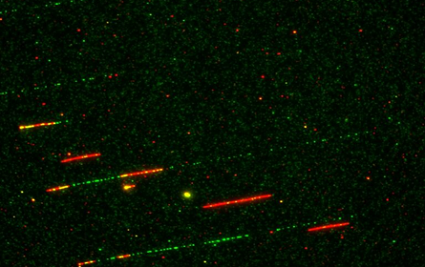In multicellular eukaryotic organisms, genomic DNA replicates in a time-controlled manner, ordering early, intermediate or late replication regions according to a spatio-temporal replication program. How this program is orchestrated remains poorly understood, but it has been observed that its dysfunction leads to the genomic instability often observed in cancer. The Rif1 protein is a key regulator of the replication program in eukaryotes, but its role during the first embryonic cell cycles, when DNA replication is very rapid and replication factors are abundant, remains poorly characterized.
In this study, the authors used a high-performance in vitro system of Xenopus egg extracts that mimics the early stages of development. Using a DNA molecular combing approach, they demonstrated that depletion of Rif1 in this system led to a substantial increase in the activation of replication origins at the scale of origin groups. Other observations, combined with a numerical model, suggest that Rif1 depletion accelerates the replication program without altering local parameters, such as distances between neighboring origins on DNA fibers. In other words, depletion of Rif1 would lead to a more homogeneous and temporally compressed program. The numerical model also predicted that Rif1 could influence the availability of replication-limiting factors. This prediction has been verified experimentally, showing that the absence of Rif1 is indeed accompanied by increased chromatin recruitment of an S-phase protein kinase (the phase of the cell cycle in which DNA is replicated) and several other key factors involved in the initiation of replication.

Combed DNA fibers (green) with replicated regions (red) in the absence of Rif1 © Kathrin Marheineke / I2BC
By proposing a model in which they show in-vitro and in-silico that the Rif1 protein simultaneously restricts access to DNA or the activity of several factors to fine-tune the exceptionally rapid DNA synthesis observed during embryonic development, the authors of the present study open the way to elucidating the molecular mechanisms involved in certain diseases resulting from Rif1 mutations or variants in humans.
See also Nature Portfolio
Contacts : Kathrin Marheineke (kathrin.marheineke@i2bc.paris-saclay.fr) ; Arach Goldar (arach.goldar@cea.fr)